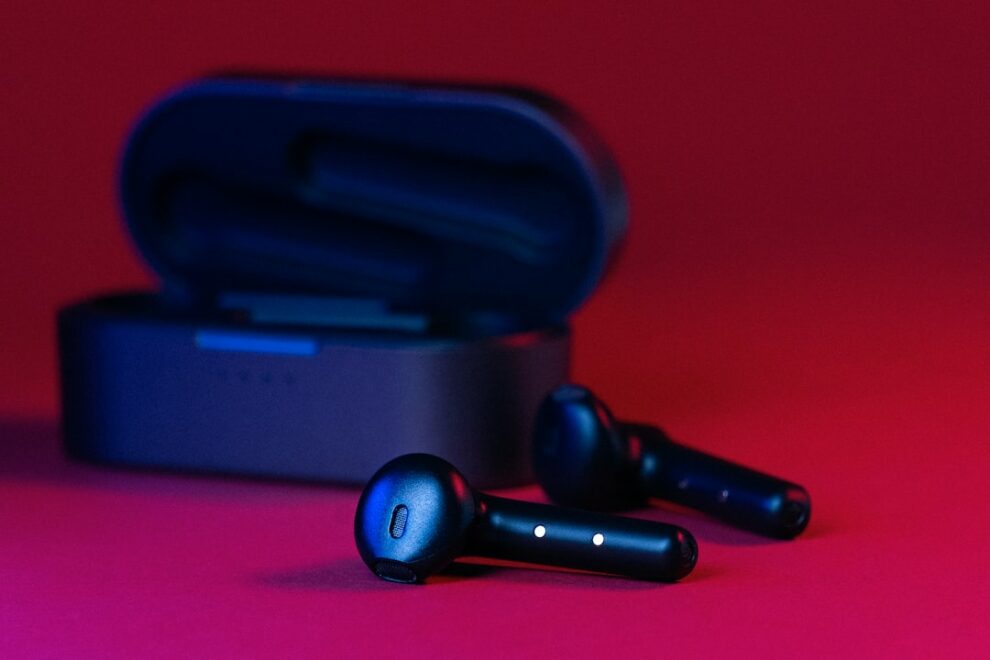Music is an essential part of our lives. It has the power to evoke emotions, bring people together, and provide a soundtrack to our daily activities. However, it is important to be aware that music can also be harmful to our hearing. The World Health Organization estimates that 1.1 billion young people are at risk of hearing loss due to exposure to loud music. This is a staggering number and highlights the need for us to take steps to protect our ears.
Understanding Decibels: What is Too Loud?
Decibels are the unit of measurement for sound. They measure the intensity or loudness of a sound. Exposure to sounds above 85 decibels can cause hearing damage. To put this into perspective, a normal conversation is around 60 decibels, while a rock concert can reach levels of 120 decibels or more. Prolonged exposure to sounds above 85 decibels can lead to permanent hearing loss.
The Dangers of Loud Headphone Use: Hearing Loss and Tinnitus
Listening to music at high volumes through headphones can have serious consequences for our hearing health. The close proximity of the headphones to our ears means that the sound is directly entering our ear canal, increasing the risk of damage. Prolonged exposure to loud music through headphones can lead to hearing loss and tinnitus.
Hearing loss is a common consequence of loud headphone use. It can occur gradually over time, making it difficult to notice until it becomes more severe. Tinnitus, on the other hand, is a ringing or buzzing in the ears that can be permanent. It can be extremely bothersome and affect our quality of life.
Factors that Affect Safe Listening Levels
There are several factors that can affect safe listening levels when using headphones. The duration of exposure to loud sounds is one important factor. The longer we listen to loud music, the greater the risk of hearing damage. The distance from the sound source is also important. The closer the sound source is to our ears, the higher the intensity of the sound and the greater the risk of damage. Lastly, the type of headphones used can also affect safe listening levels. In-ear headphones, for example, can increase the risk of damage due to their close proximity to the ear canal.
The Risks of Listening to Music at Maximum Volume
Listening to music at maximum volume can be extremely damaging to our hearing. In fact, it can cause hearing damage in as little as 15 minutes. The risk of hearing damage increases with the duration of exposure. This means that if we consistently listen to music at maximum volume for long periods of time, we are putting ourselves at a high risk of permanent hearing loss.
How Long Can You Safely Listen to Music on Headphones?
The safe listening time on headphones depends on several factors, including the volume level and the type of headphones used. As a general rule, it is recommended to take a break every hour of listening. This allows our ears to rest and recover from any potential damage. It is also important to listen at a moderate volume level and avoid turning up the volume to maximum.
Tips for Safe Headphone Use: Volume Control and Noise-Cancelling Features
There are several tips that can help us use headphones safely and protect our hearing. One important tip is to use headphones with volume control features. This allows us to easily adjust the volume to a safe level and avoid excessive loudness. Another tip is to choose headphones with noise-cancelling features. These headphones reduce external noise, allowing us to listen at lower volume levels and reducing the need for high volume levels.
Choosing the Right Headphones: Factors to Consider
Choosing the right headphones is crucial for protecting our hearing. Over-ear headphones are generally safer than in-ear headphones. This is because they provide a greater distance between the sound source and our ears, reducing the risk of damage. It is also important to look for headphones with a low decibel output. This means that the headphones produce sound at a lower intensity, reducing the risk of damage to our ears.
Alternatives to Headphones: Speakers and Earbuds
If you are concerned about the potential risks of using headphones, there are alternatives that can be safer for your hearing. Speakers, for example, are a great alternative to headphones. They allow the sound to be spread out in the room, reducing the intensity of the sound and minimizing the risk of damage. Earbuds can also be a safer alternative if they are used correctly. It is important to choose earbuds that fit properly in your ears and do not require you to turn up the volume to excessive levels.
Conclusion: Protecting Your Hearing for a Lifetime of Music Enjoyment
In conclusion, it is important to protect your hearing in order to enjoy music for a lifetime. The World Health Organization estimates that 1.1 billion young people are at risk of hearing loss due to exposure to loud music. By understanding decibels and the dangers of loud headphone use, we can take steps to protect our ears. Factors such as duration of exposure, distance from the sound source, and type of headphones used can all affect safe listening levels. By following safe listening practices and choosing the right headphones or alternative listening devices, we can ensure that we can continue to enjoy music without compromising our hearing health.
If you’re concerned about the volume levels of your headphones, you might find this article on how your thoughts could make you sick interesting. While it may not seem directly related, understanding the impact of negative thoughts and stress on our overall well-being can help us recognize the importance of protecting our hearing health. So, before you crank up the volume on your favorite tunes, take a moment to consider the potential consequences and find a balance that keeps both your mind and ears in good shape.













Add Comment